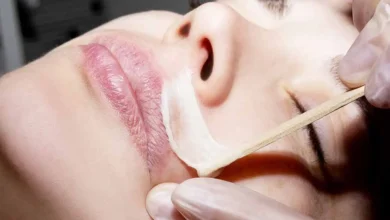Slipped Disc blog: Causes, Symptoms, and Treatment Options

A slipped disc, also known as a herniated disc or a ruptured disc, is a common spinal condition that can cause significant pain and discomfort. In this article, we will explore the causes, symptoms, and treatment options for slipped disc blog, providing valuable insights to help you understand this condition better.
What is a Slipped Disc?
A slipped disc occurs when the soft inner portion of an intervertebral disc protrudes through the tough outer layer. This protrusion can put pressure on nearby nerves, leading to pain, numbness, and weakness in the affected area. While it is commonly referred to as a slipped disc, the disc does not actually slip out of place but rather bulges or herniates.
Anatomy of the Spine
Understanding the anatomy of the spine is crucial in comprehending how a slipped disc can occur. These discs act as cushions, absorbing shocks and enabling flexibility in the spine.
Common Causes of Slipped Discs
Various factors, including age-related degeneration, improper lifting techniques, excess body weight, and a sedentary lifestyle can cause slipped discs. As we age, the intervertebral discs lose some of their water content, making them less flexible and more susceptible to injury.
Recognizing the Symptoms
Common symptoms include back pain, leg pain (sciatica), numbness and tingling, and muscle weakness. The pain may worsen with specific movements or prolonged sitting or standing.
Diagnosing a Slipped Disc
Diagnosing a slipped disc involves a thorough physical examination and may require imaging tests such as MRI, CT scan, and X-rays. A nerve conduction study may also be conducted to assess nerve function.
Conservative Treatment Options
In many cases, conservative treatment options are effective in managing slipped discs. Some common approaches include rest and activity modification, pain medication, physical therapy, and epidural steroid injections.
Surgical Interventions
Microdiscectomy, laminectomy, and spinal fusion are some of the surgical procedures used to treat slipped discs.
Recovery and Rehabilitation
Recovery from slipped disc surgery involves postoperative care and physical rehabilitation. Following the recommended rehabilitation program is essential for restoring strength and mobility.
Lifestyle Changes for Prevention
Making certain lifestyle changes can help prevent slipped discs. Regular exercise, maintaining a healthy diet, and practicing proper lifting techniques can reduce the risk of disc herniation.
Alternative and Complementary Therapies
In addition to conventional treatments, some individuals find relief through alternative and complementary therapies such as chiropractic care, acupuncture, and yoga.
Managing Slipped Discs in the Workplace
Managing slipped discs in the workplace is crucial for those with physically demanding jobs. Ergonomic workstations, regular breaks, and supportive chairs can alleviate stress on the spine.
When to Seek Medical Attention
Ignoring symptoms or delaying treatment can lead to complications of untreated slipped discs.
Slipped Disc blog in Athletes
Athletes are also susceptible to slipped discs due to the physical demands of their sports. Understanding sports-specific risk factors and implementing injury prevention strategies is vital for their well-being.
Debunking Common Myths about Slipped Discs
There are several misconceptions surrounding slipped discs. We debunk myths such as “bed rest is the best treatment,” “surgery is the only solution,” and “slipped discs only happen to older people.” Read more…
Conclusion
In conclusion, a slipped disc blog is a painful condition affecting many individuals worldwide. Understanding the causes, symptoms, and treatment options can empower individuals to make informed decisions about their health. One can effectively manage and recover from a slipped disc by adopting preventive measures and seeking appropriate medical care.
FAQs
- Can a slipped disc heal on its own? In some cases, a small herniated disc can heal on its own with conservative treatment. However, larger herniations may require medical intervention.
- Is surgery the only option for a slipped disc? Surgery is not always necessary. Many slipped discs can be managed with non-surgical approaches.
- Can exercise worsen a slipped disc? While certain exercises may exacerbate the pain, appropriate physical therapy and exercises can help improve the condition.
- Can slipped discs be prevented? While some risk factors are beyond control, lifestyle changes and proper body mechanics can reduce the risk of developing slipped discs.




